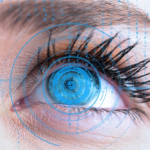The Essential Things You Should Know About Type 2 Diabetes and How A Diabetes Care Physician Can help
If you have Type 2 diabetes, your body’s cells can’t properly take up sugar (glucose) from the foods you eat. If left untreated, Type 2 diabetes can cause such health problems as heart disease, kidney disease, and stroke. You can manage this disease by making lifestyle changes, taking medications and/or insulin, and seeing your diabetes care physician for regular check-ins. You can find the right diabetes care physician for yourself from icareheal, where we provide you with an all-in-one- platform for doctors and clinics to ease your search and help make your work easier.
What is Type 2 diabetes?
Type 2 diabetes is a disease where your body can’t use energy from food properly. Your pancreas produces insulin (a hormone) to help your cells use glucose (sugar). But over time your pancreas makes less insulin and the cells resist the insulin. This causes too much sugar to build up in your blood. High blood sugar levels from Type 2 diabetes can lead to serious health problems including heart disease, stroke or death.
Type 1 vs. Type 2 diabetes: What’s the difference?
Type 2 diabetes is not the same as Type 1 diabetes. In Type 1 diabetes, your pancreas doesn’t make any insulin. In Type 2, your pancreas doesn’t make enough insulin, and the insulin it is making doesn’t always work as it should. Both types are forms of diabetes mellitus, meaning they lead to hyperglycemia (high blood sugar).
Type 2 diabetes usually affects older adults, though it’s becoming more common in children. Type 1 diabetes usually develops in children or young adults, but people of any age can get it.
Symptoms of type 2 diabetes
High blood glucose levels often cause signs and symptoms of diabetes. Common signs and symptoms include:
- being more thirsty than usual
- passing more urine
- feeling tired and lethargic
- slow-healing wounds
- recurring infection
- blurred vision.
Some people may have no symptoms and as a result, diagnosis may be delayed. Sometimes, even if symptoms are present, they may not be recognized or may just be thought to be due to getting older.
Risk factors for type 2 diabetes
There are genetic and environmental risk factors for developing type 2 diabetes.
Those most at risk of developing type 2 diabetes include:
- people with pre-diabetes
- Aboriginal and Torres Strait Islander people, people of high-risk ethnicities including Pacific Islanders, Maori, Asian (including the Indian subcontinent, or of Chinese origin) Middle Eastern, North African or Southern European
- people aged 40 and over who are overweight and obese
- those who have high blood pressure
- people with a first-degree relative with type 2 diabetes
- all people with cardiovascular disease such as past history of heart attack, angina, stroke or narrowed blood vessels
- women with polycystic ovary syndrome (PCOS) who are overweight
- women who have had gestational diabetes
- people aged 55 or over. The risk increases with age
- people taking certain antipsychotic medication or corticosteroid medication.
Lifestyle risk factors for type 2 diabetes include:
- being overweight, especially around the waist
- low levels of physical activity, including more than 2 hours of television watching per day
- unhealthy eating habits, such as regularly choosing high-fat, high-sugar, high-salt, or low-fiber foods
- cigarette smoking
- high blood pressure and cholesterol.
If you are at risk of developing type 2 diabetes, it is strongly recommended that you have a laboratory blood glucose test ordered by your doctor (not using a home blood glucose meter) to check if you have diabetes. Don’t wait for symptoms to develop, as these may not appear until blood glucose levels are quite high.
Diagnosis for Type 2 Diabetes
The following blood tests help your healthcare provider diagnose diabetes:
- Fasting plasma glucose test: checks your blood glucose level. This test is best done in the office in the morning after an eight-hour fast (nothing to eat or drink except sips of water).
- Random plasma glucose test: This lab test can be done any time without the need to fast.
- Glycolated hemoglobin testing (A1c) measures your average blood sugar levels over three months.
- Oral glucose tolerance testing checks your blood sugar levels before and after you drink a sugary beverage. The test evaluates how your body handles glucose.
Management of Type 2 Diabetes
There’s no cure for Type 2 diabetes. But you can manage the condition by maintaining a healthy lifestyle and taking medication whenever needed. Work with your diabetes care physician to manage your:
- Blood sugar: A blood glucose meter or continuous glucose monitoring (CGM) can help you meet your blood sugar target. Your healthcare provider may also recommend regular A1c tests, oral medications (pills), insulin therapy or injectable non-insulin diabetes medications.
- Blood pressure: Lower your blood pressure by not smoking, exercising regularly and eating a healthy diet. Your healthcare provider may recommend blood pressure medication such as beta-blockers or ACE inhibitors.
- Cholesterol: Follow a meal plan low in saturated fats, trans fat, salt, and sugar. Your healthcare provider may recommend statins, which are a type of drug to lower cholesterol.
Requirement of medication or insulin for Type 2 diabetes?
Some people take medication to manage diabetes, along with diet and exercise. Your healthcare provider may recommend oral diabetes medications. These are pills or liquids that you take by mouth. For example, a medicine called metformin helps control the amount of glucose your liver produces.
You can also take insulin to help your body use sugar more efficiently. Insulin comes in the following forms:
- Injectable insulin is a shot you give yourself. Most people inject insulin into a fleshy part of their body such as their belly. Injectable insulin is available in a vial or an insulin pen.
- Inhaled insulin is inhaled through your mouth. It is only available in a rapid-acting form.
- Insulin pumps deliver insulin continuously, similar to how a healthy pancreas would. Pumps release insulin into your body through a tiny cannula (thin, flexible tube). Pumps connected to a computerized device that lets you control the dose and frequency of insulin.
Type 2 diabetes is a disease where your body doesn’t make enough insulin and can’t use sugar the way it should. Sugar, or glucose, builds up in your blood. High blood sugar can lead to serious health complications. But Type 2 diabetes is manageable. Regular exercise and a healthy diet can help you manage your blood sugar. You may also need medication or insulin. If you have Type 2 diabetes, you should monitor your blood sugar at home regularly and stay in close communication with your diabetes care physician.












